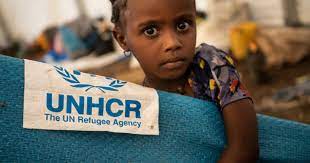Fundraiser for Kids

However, the combination of armed conflict, climate shocks, disease outbreaks and the socioeconomic impacts of COVID-19 have led to the deterioration in humanitarian conditions in the country. The 2023 Ethiopia Humanitarian Response Plan (HRP) seeks $3.99 billion to target 20.1 million people across the country, including an estimated 4.6 million internally displaced people (IDPs).
Ethiopia is one of the most drought-prone countries in the world, and the severe drought that began in late 2020 has continued into 2023 with the country enduring five failed rainy seasons. The 2023 HRP aims to reach an estimated 13 million people for humanitarian response in drought-affected areas.
In their Oct. 31, 2023 Ethiopia Situation Report, the UN Office for the Coordination of Humanitarian Affairs said, “The humanitarian needs in Ethiopia remain high and continue to be triggered by the combined effects of climate events, conflicts and intercommunal violence, and disease outbreaks.”
In contrast to drought, heavy rains and flash floods in 2023 in Oromia, Somali and Afar regions “have negatively affected those communities with the destruction of shelters used by internally displaced persons (IDPs), loss of cattle and a risk in an increase in the already rapidly spreading cholera outbreak.”
(Photo: USAID is responding to growing humanitarian needs in Ethiopia’s Tigray region. Source: USAID via @USAIDSavesLives)
Some parts of Ethiopia are affected by both drought and conflict simultaneously, including Oromia and Somali regions. A peace deal signed by the Ethiopian government and the Tigray People’s Liberation Front in November 2022 ended a two-year war that displaced millions and created dire humanitarian conditions in the Tigray region. Since July 2023, the Ethiopian military and militias have clashed in towns throughout the Amhara region.
Since November 2020, forces under Prime Minister Abiy Ahmed Ali had been fighting to oust the Tigray People’s Liberation Front (TPLF) from its stronghold in the northern region of Tigray. Tensions had been growing since Abiy took power in 2018, and the feud reached a boiling point in September 2020 “when the Tigrayans held regional parliamentary elections in defiance of Abiy, who had postponed the vote across Ethiopia.”
While acknowledging the visible progress since the November 2022 peace deal, the UN High Commissioner for Refugees, Filippo Grandi, said in February 2023, “much more needs to be done to support the reconstruction and recovery efforts in the Afar, Amhara and Tigray regions.”